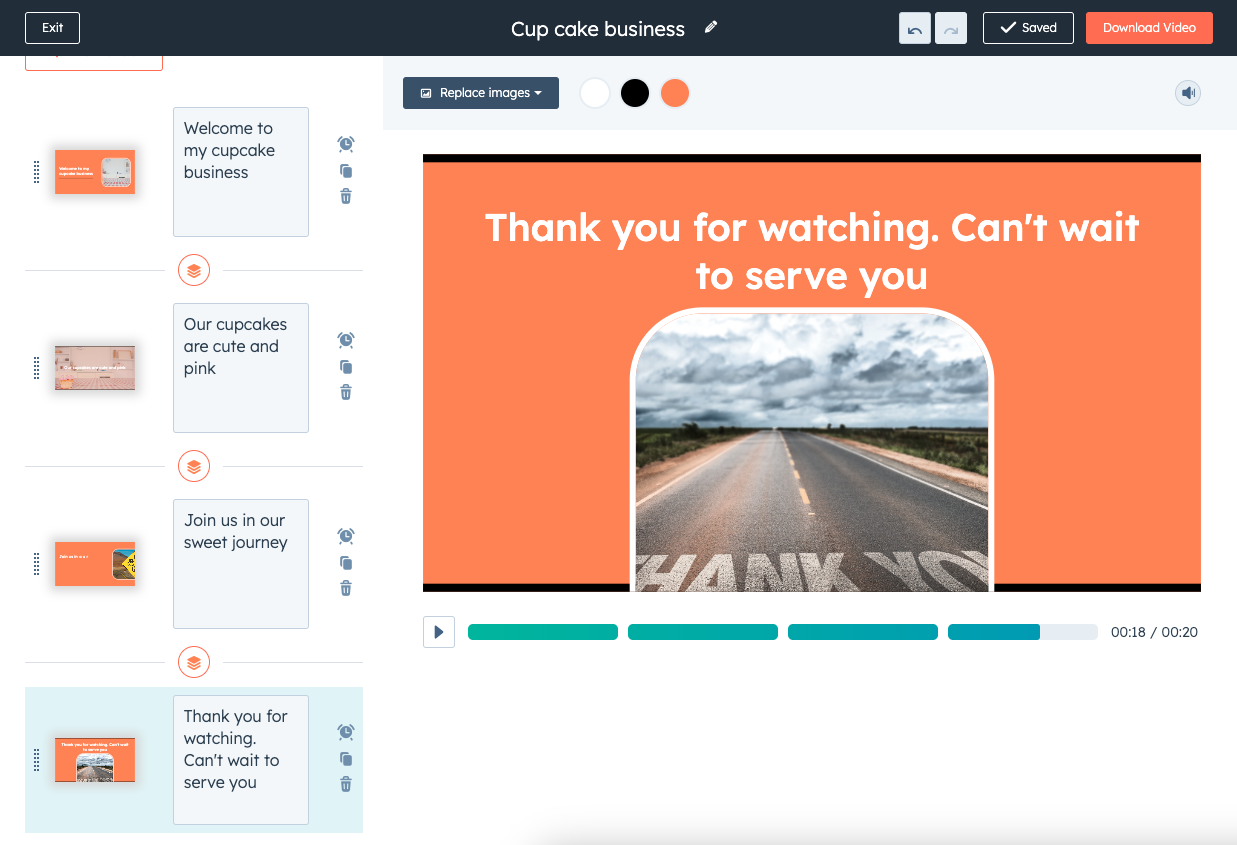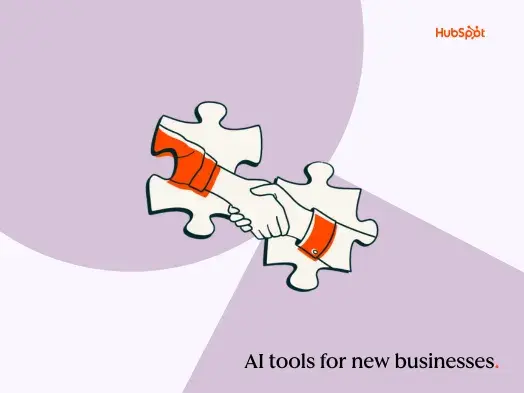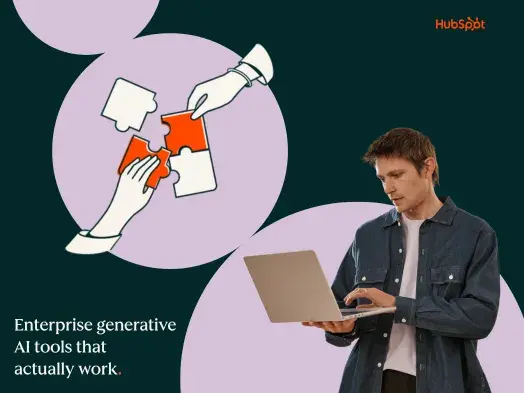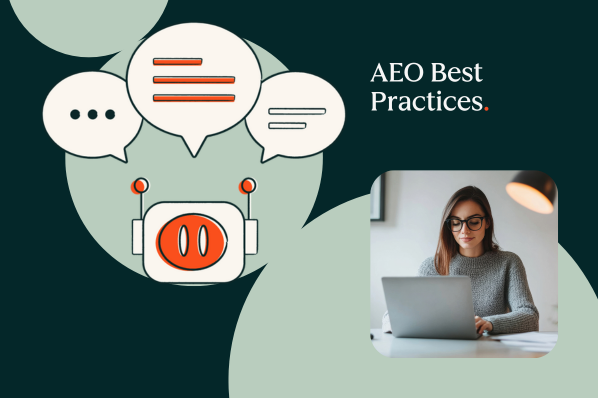There are many benefits to using AI as a content creator, and many creators are already doing so. If you‘re wondering how AI works for content creators and want to start using the tool yourself, you’ve come to the right blog. Let's get into it.
Benefits of Using AI for Content Creation
How to Use AI as a Content Creator
How to Use AI for Blog Content
How to Use AI for Video Content
How to Use AI for Your Podcast
Benefits of Using AI for Content Creation
Saves Time and Boosts Efficiency
As I said, there are many benefits to using AI as a content creator. Arguably, the biggest and most obvious benefit is that it saves time.
A while ago, I spoke with content creator and public information officer Bethany Anderson, who uses AI tools like ChatGPT to streamline the writing tasks of her job.
“There was this one week a couple of months ago when I had so many deadlines, so many social media calendars due, so many blogs due, and so many bios due — I was drowning,” she told me.
So, she gave ChatGPT a try and wound up completing days of work in just a few hours.
“We're talking about days of your life that you get back,” she said. “And, to me, time is valuable. It's more valuable than money.”
I also experimented with using AI to create a TikTok marketing video and was surprised by the results. From ideation to script writing to execution, the whole process took about 10 minutes when it would have taken me a bit longer without AI.
Podcaster Blaine Blous uses an AI conversion tool he and his colleague, Ramon Berrios, created called Castmagic to transcribe his content and pull important information to be repurposed in other content, such as blog posts and summaries.
“We use it to automate 90% of the legwork in transcribing and mining valuable information from long-form dialogues,” he says. “It saves a bunch of time, keeps our content organized, and lets us turn our content catalog into an evergreen source from which to create content.”
Bethany, Blaine, and I aren't the only creators who save time using AI.
According to HubSpot’s State of AI report, 95% of professionals using AI say it helps them spend less time on manual tasks, and 88% say it allows them to allot more time to the most important parts of their role.
Helps Ideate
Obviously, the key to being a content creator is to be creative, but even the most creative people need a little guidance from time to time. That's where AI comes in. I’ve used generative AI tools to generate ideas for blog posts or videos.
I do this by asking the tool to generate headlines based on general topics. For example, when I tried writing a blog post using ChatGPT, I asked the AI tool to generate blog topics pertaining to cats.
ChatGPT responded by generating 15 blog ideas, one of which I ended up using for a draft.
The ideation process was easy and only took a few seconds, so it's no surprise that 33% of generative AI users rely on AI to produce ideas or inspiration for their content.
Improve Content Quality
As a blogger, I write a lot. I'm pretty sure I’ve written hundreds of posts for HubSpot over the years I've been here. And, as much as I have to write, I also have to edit to ensure the content I write is perfect for your reading pleasure.
I use tools like Grammarly, which uses AI to sift through my words and pinpoint any spelling or grammar mistakes to save time. Grammarly also suggests improving my sentence structure to make my content more readable.
Many creators like myself use AI to improve the quality of their content. In fact, that's what 50% of professionals use AI for.
How to Use AI as a Content Creator
Practice Good Ethics.
Before you incorporate AI into your content creation strategy, you must make a commitment to yourself and your brand to be ethical about how you use AI.
This means being transparent with your audience about using AI and using it as an assistive tool rather than a “get-out-of-creating-free” card.
“It's important to not fully automate everything away and make sure your content remains human and authentic,” says Bolus.
He explains, “Let AI handle the legwork of information processing and rough drafting to match your tone, style, and format, but make sure to put on the final edits and make the necessary adjustments so the content itself does not lose your authenticity.”
Another way to ensure the ethical use of AI is to fact-check your work. AI can be efficient and time-saving, but it can still be wrong.
If you're using AI to generate written content or share information, make sure everything is correct, factual, and up to date.
With that all said, let's get into how you can use AI depending on the type of content you are creating.
How to Use AI for Blog Content
As a blogger, I don‘t really use AI much when writing content. And if you read about the time I tried using AI to write a blog, then you know it’s because I find it tedious, and I'm too used to working without it.
However, my colleague, Caroline Forsey, recently explained how some HubSpot bloggers use AI to create blog content ethically.
Here's how some of us use it and how you can, too.
Brainstorm Ideas
Sometimes, you'll know a topic is buzzy enough to pursue for a blog post, but you may not know how to make it work. Fortunately, you can use generative AI to get you started.
“I've been reading a lot about how live shopping is going to become the new 'norm' in retail, and I knew there could be an interesting angle to write,” Forsey said. “But I couldn't fully flesh one out.”
So, she used ChatSpot, HubSpot's AI-powered chatbot, to brainstorm some ideas.
She asked ChatSpot, “Please provide me with seven blog post ideas based on the concept of live shopping becoming the status quo for the retail industry.”
Below is a screenshot of what ChatSpot generated.

“From there, I can workshop by myself or with a colleague to formulate the final topic,” Forsey explains. “But in this case, ChatSpot didn't just save me time — it also introduced a new perspective and more creative, interesting ideas that I hadn't previously considered.”
If you find yourself struggling to come up with an angle or topic for a blog post or article, use generative AI tools like HubSpot's Blog Ideas Generator or ChatSpot as colleagues you can defer to for inspiration.
Pro-Tip: Always conduct your own follow-up research on topics suggested by AI tools to ensure accuracy and avoid any bias.
Outline
When I tried to use ChatGPT to create a blog post, I found that generative AI is an excellent tool for generating outlines that writers can refine into high-quality, engaging blog posts.
For example, I asked ChatGPT to create an outline based on a headline the chatbot suggested to me, “The Economics of Cat Care: How Much Does It Cost to Raise a Cat?”
I instructed ChatGPT to include headings and subheadings, and it generated an outline close to my writing style.
Below is a screenshot of the outline it generated:

So, if you're a content writer like me, you could save time on outlines by leaving them to ChatGPT. Remember, this outline can serve as the foundation of your content, but you still need to refine it with your research and voice.
Quick meta descriptions and summaries
We've all been there are blog writers. You just poured your heart and soul into a blog post and now you need to use that last bit of creative energy to type in a meta description and summary to help with SEO.
You could stare at the blank text box and wonder how you can possibly summarize your greatest work thus far in one punchy sentence, or you could leave that to AI.
AI tools like ChatSpot can suggest meta descriptions and summaries for you in seconds. Take a look at the meta descriptions ChatSpot suggested below for a post about email marketing trends.

Pro-Tip: Consider revising suggestions like these to better suit your writing style and to add a human touch.
How to Use AI for Video Content
Here are a few ways you can use AI for video content.
Captions and Subtitles
Captions and subtitles are crucial for making video content accessible to many people.
Back in college, I interned with PBS, and one of my duties was writing the closed captions for some of the programs airing. It was tedious at the time, but now AI tools can generate captions way quicker than a doe-eyed college intern.
AI tools like Veed.io allow users to upload their videos to be captioned in sections. I tried it out by uploading a blooper from a video I was filming for YouTube. Here is a screenshot of the results.

The video I uploaded is on the right, and the subtitles Veed.io generated are on the left. And I have to admit, the captions are pretty accurate.
So if you create videos and want to save time captioning or subtitling them, look into some AI tools to get the job done.
Pro Tip: Always double-check AI-generated captions to ensure the tool didn't misinterpret your content and generate incorrect words.
Video Treatments
I spoke to photographer and filmmaker Mateo Toro, a while ago, who uses AI to streamline his video treatment process.
A video treatment is a way to convey a project's concept or story. Many video treatments involve the use of images and visual media found online or in previous works.
“Video treatments take time. You have to scrub through the video, take screenshots, and edit for the video treatment,” Toro explained.
Toro says the task could easily take an hour or so to complete, so he uses Kive.ai to expedite the process.
“Kive.ai just makes it much easier for me to find the video with a style or tone I'm looking to emulate,” he says.
With Kive.ai, creators can paste the link of a video into the system, and Kive.ai will extract frames from the video as screenshots to import into a board. Toro says the process can save him hours of time.
How to Use AI for Your Podcast
As I mentioned earlier, tools like Castmagic are available to help record, transcribe, and mine out important quotes and information that can be repurposed for other types of content.
"That transcript and context can then be used by AI to draft content that's crucial to our creative workflow, like show notes, email drafts, summaries, newsletters, blog articles, and any other written asset that depends on understanding the information inside our media files," says Bolus.
To start using AI in your content creation process, think about parts of the process that are tedious, time-consuming, and could be automated.
Then refer to this blog for some of the tools I mentioned or dabble in other AI tools to see if/how they streamline your workflow.
Just remember to be ethical and transparent about your AI usage, and always apply a human touch by making your own adjustments or conducting additional research.
Good luck!
Artificial Intelligence





![AI email subject lines that drive 3x more revenue and actually convert [+ exclusive insights]](https://53.fs1.hubspotusercontent-na1.net/hubfs/53/ai-email-optimization-1-20251014-4500151-1.webp)






-1-20250905-2237709%202.webp)